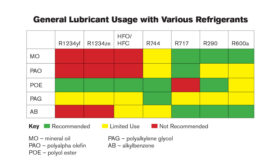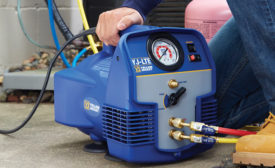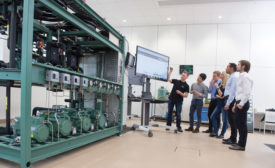Home » natural refrigerants
Articles Tagged with ''natural refrigerants''
Utility incentives discussed to accelerate adoption of natural refrigerant technologies
Read More
Collaboration Researches Refrigeration System Using Natural Refrigerants
Researchers expect system to provide 20 to 50 percent energy savings
August 3, 2016
Lubrication Tips for Next-gen Refrigerants
Low-GWP refrigerant transitions cause uncertainty in the land of lubricants
Read More
HARDI Joins the North American Sustainable Refrigeration Council
Distributor group supports use of alternative refrigerants
May 27, 2016
DeCicco & Sons Earns GreenChill Award for Eco-Friendly Store
Store installed a Hillphoenix Advansor CO2 Booster System that utilizes CO2 refrigerant
May 26, 2016
ATMOsphere America Conference Coming to Chicago in June
Natural refrigerants event expected to be biggest ever
May 16, 2016
Sainsbury’s Takes Delivery of Prototype Natural Refrigerant Trailer Refrigeration Unit
The first of three natural refrigerant trailer prototypes enter service in the UK
May 12, 2016
The Case for a Natural Refrigerant Incentive Program
Natural refrigerants in the US need a kick-start, and it could happen in California
Read More
Natural, HC Refrigerants Spell Change — Not Doom
Examining the impact refrigerants lacking recovery requirements have on recovery and reclamation
Read More
HVAC Refrigerants Continue to Evolve
Regulatory requirements are prompting manufacturers to utilize low-GWP alternatives
Read More
Copyright ©2024. All Rights Reserved BNP Media.
Design, CMS, Hosting & Web Development :: ePublishing







